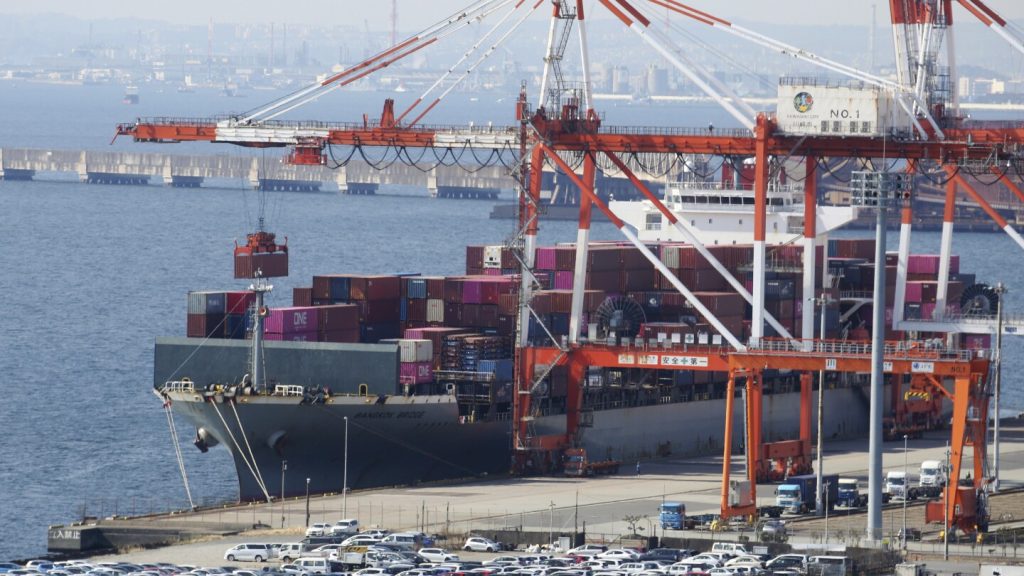Japan’s trade deficit has extended for the third consecutive fiscal year, reaching 5.89 trillion yen ($38 billion) for the year ending in March. The weak yen and rising costs of energy and imports have contributed to the deficit, with the Middle East, Australia, and Indonesia being the main sources of trade deficits. However, Japan maintains a surplus with the U.S. and certain European countries. While exports to China experienced a decline for the first time in four years, recent data shows a rebound with exports growing 12% from the previous year, attributed to strong technology-related exports.
Exports remain a key driver of growth for Japan, with the recent decline in the value of the yen affecting the trade balance. The weakening yen has increased the cost of imports but has boosted the value of exports when converted to yen. The U.S. dollar trading above 150 yen has further impacted trade dynamics, rising from 130 yen a year ago. Data for March revealed a trade surplus of 366.5 billion yen ($2.4 billion), with exports growing by 7% from the previous year and imports declining by nearly 5%. Exports to the U.S. saw a significant increase of more than 8% in March.
Compared to the previous fiscal year, the 2023 trade deficit was smaller, influenced by the economic impacts of the war in Ukraine and soaring energy prices in 2022. The deficit was on par with the levels recorded in 2021, with Japan enjoying a trade surplus in 2020. Challenges in securing parts, particularly computer chips, due to pandemic-related restrictions have affected Japan’s production and exports. However, these issues have gradually eased, with Japan primarily importing food and exporting autos, auto parts, and electrical machinery. Inbound tourism, which is counted statistically as an export, has been on the rise.
Analysts predict that exports will continue to be a key driver of growth in the coming months, fueled by strong technology-related exports. Despite the challenges posed by the pandemic and global economic fluctuations, Japan’s trade balance is expected to stabilize. The country’s trade dynamics with various regions, particularly China and the U.S., play a crucial role in shaping its overall trade performance. As the global economy continues to recover from the impact of the pandemic, Japan’s trade deficits and surpluses are likely to be influenced by shifts in currency values and changes in global demand for its exports.


